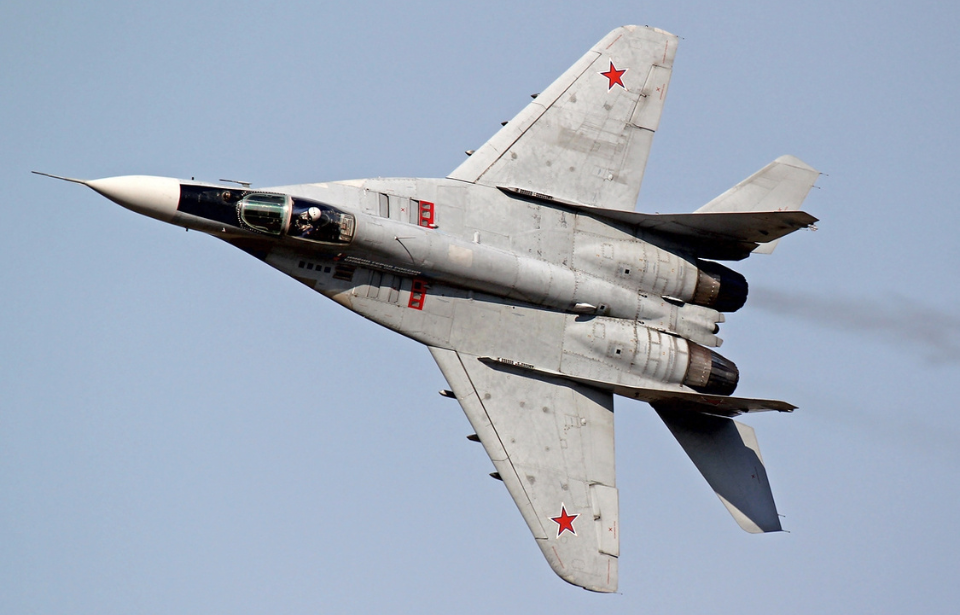The Mikoyan MiG-29 Fulcrum is a Soviet air superiority fighter that’s earned the respect of many pilots throughout the world. It entered service in the early-to-mid-1980s, just under a decade before the collapse of the Soviet Union, with the intention being to counter the US Air Force’s latest fighters, including the General Dynamics F-16 Fighting Falcon and the McDonnell Douglas F-15 Eagle.
Ahead of its time, the MiG-29 featured superior twin-engine technology, making it a world ahead of its predecessors, such as the Grumman F-14 Tomcat, and those released around the same time – AKA, the McDonnell Douglas F/A-18 Hornet.
Development of the Mikoyan MiG-29 Fulcrum
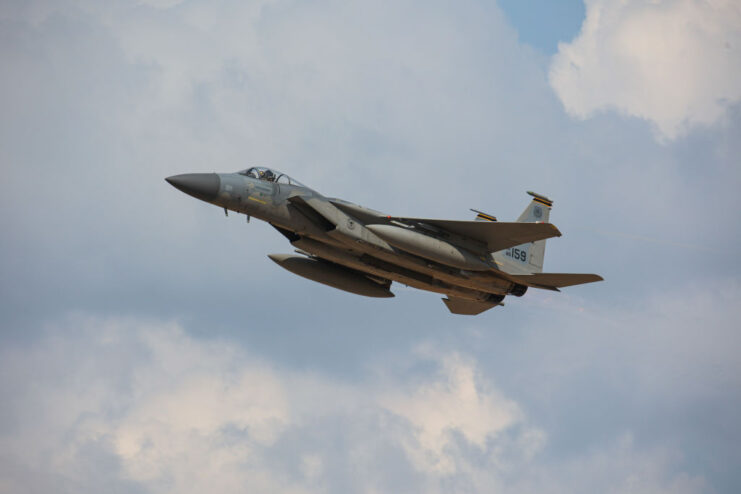
As the Vietnam War continued to rage on in the mid-to-late 1960s, the US Air Force knew it needed to develop a new fighter jet to combat the Mikoyan-Gurevich MiG-15s being supplied to the North Vietnamese by the Soviet Union. In response to what became the McDonnell Douglas F-15 Eagle, the USSR decided to develop an even more high-tech aircraft capable of a long range at Mach 2+ speed, carrying a variety of heavy armaments and complex maneuvers.
These requirements changed when officials determined that the newest Soviet jet needed to have much different specifications, with the biggest change coming in the decision to make the aircraft lightweight.
After years of development and design, what became known as the MiG-29 Fulcrum took to the skies in October 1977, with the aircraft officially entering service with the Soviet Air Forces in August 1983. Still active to this day, a number of upgrades have been applied to the original specs, resulting in quite a few, more advanced variants, including the MiG-29K Fulcrum-D and the MiG-29M Fulcrum-E.
Mikoyan MiG-29 Fulcrum specs
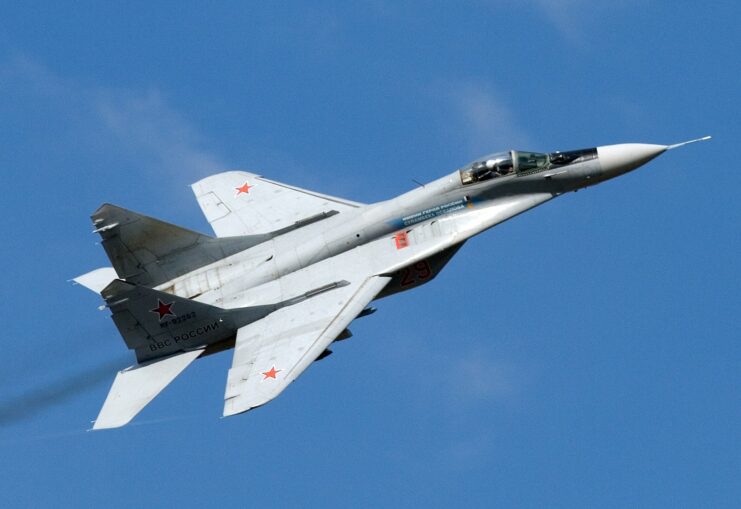
Flown by a solo pilot, the MiG-29 Fulcrum is a relatively small aircraft, coming in at just under 57 feet in length. With a maximum takeoff weight of 39,683 pounds, it wound up being heavier than its American counterparts – in particular, the F-15 Eagle. That being said, its weight doesn’t prevent it from being maneuverable in the air. It’s also capable of performing low-speed maneuvers, making it an all-around impeccable fighter aircraft.
In terms of speed, the MiG-29 is capable of reaching a maximum speed of Mach 2.3, slightly higher than the initial requirements set out by officials, and it has a range of 890 miles, when not in combat. This is thanks to its pair of Klimov RD-33 after-burning turbofan engines. When in a combat situation, this range is nearly halved, to between 430-560 miles.
Its ammunition capacity is where the MiG-29 really shines, with the ability to launch missiles that can strike enemy targets in the air, even when said targets are outside of the line of sight. This has led many to call it one of the most deadly to ever be developed. Along with being equipped with a 30 mm Gryazev-Shipunov GSh-30-1 autocannon, the aircraft was designed to feature a total of seven hardpoints that can carry an array of rockets, missiles and bombs.
Operational service with the Soviet Union (and, later, Russia)
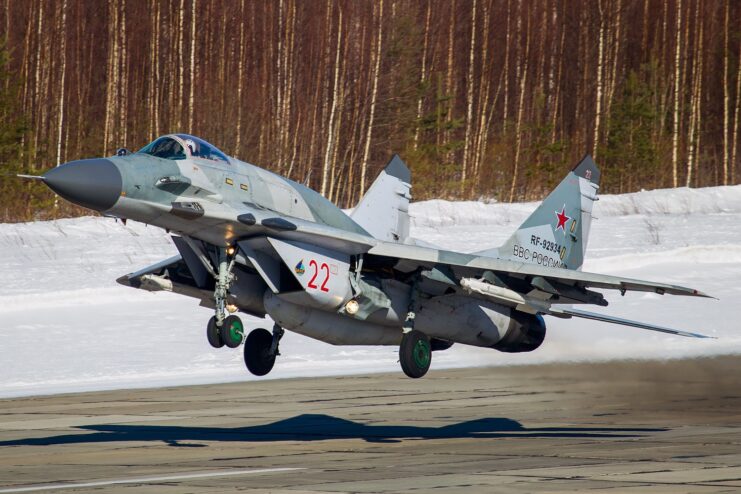
The MiG-29 Fulcrum immediately proved itself to be a superior aircraft upon entering service with the Soviet Union. Capable of taking on virtually any enemy in a dogfight, it continued to serve with the Russian Air Force following the collapse of the USSR, with approximately 600 (original and variants) still being flown by the service.
Despite being several decades old, the MiG-29 hasn’t really seen that much combat with the Russians, with the aircraft largely being flown at airshows, with some crashes reported. That being said, the SMT variant was deployed as part of the Syrian Civil War in 2017, conducting bombing missions and escort duties.
Outside of Russia, another Soviet country to equip the MiG-29 is Ukraine, with whom it has seen much more action. In 2014, the Ukrainian Air Force deployed many during the Russian invasion of Crimea and the War in Donbas. More recently, they’ve taken to the skies as part of the Russo-Ukrainian War, making them a target of Russian missile strikes.
Exported to a number of air forces across the world
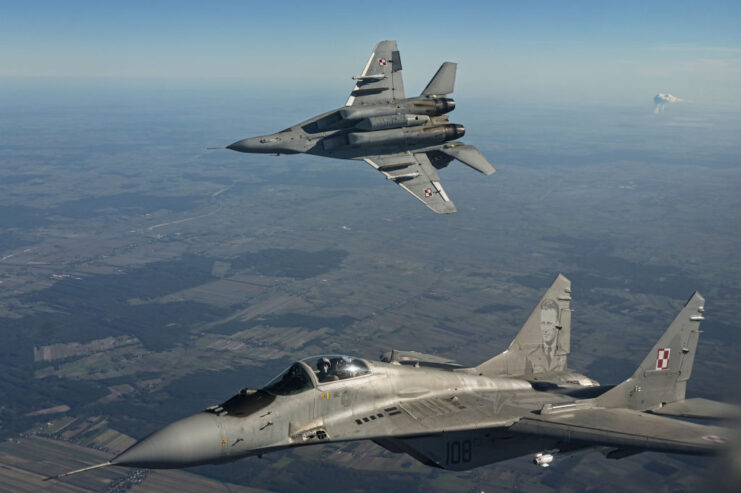
Given its advanced technology and maneuverability, the MiG-29 Fulcrum was on the wishlist of many air forces across the world, with several ordering export models from Russia. The one that was the aircraft’s biggest fan was East Germany, which purchased 24 in the mid-1980s. Following the fall of the Berlin Wall, they were integrated into the West German Luftwaffe, and remained in action until the last was transferred out of Germany in 2004.
India was also a major customer of the MiG-29, becoming the first international purchaser outside of the Warsaw Pact. In 1984, the Indian Air Force ordered 44 units, with more orders being placed as the years went on. The jets saw action during the Kargil War, and they were later upgraded to feature newer technology and weapons capabilities.
At present, countries such as North Korea, India, Iran, Cuba, Bulgaria, Poland and Peru are among those to still fly the MiG-29.
Enduring legacy of the MiG-29 Fulcrum
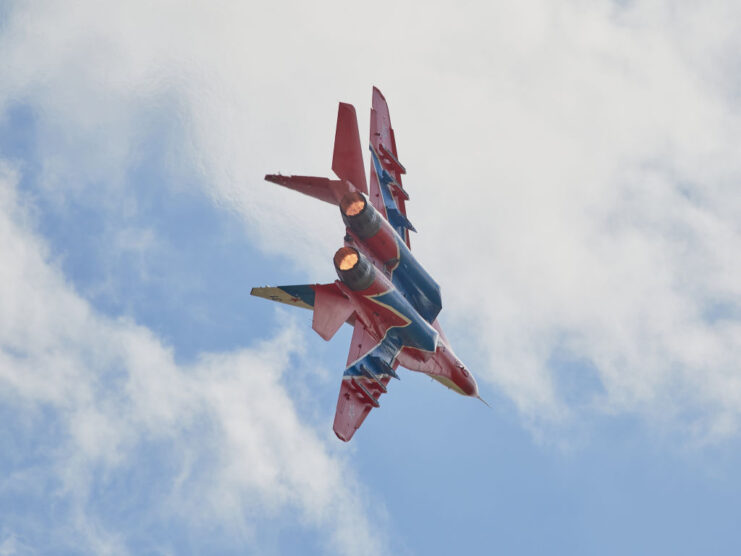
Given its role in aviation history, it’s not surprising that the MiG-29 Fulcrum has left an enduring legacy. Given its robust design, the Russian Air Force continues to operate older variants, many of which have been upgraded to the SMT variant, which features a new and improved engine unit.
More from us: The Magic Engineering Behind Why Early Fighters Didn’t Shoot Their Own Propellers
The aircraft has also influenced the design of newer jets, including the Mikoyan MiG-35, considered to be the fifth generation of multi-role air fighters. The aircraft made its first flight in 2016, and it officially entered service with the Russian Air Force three years later.
